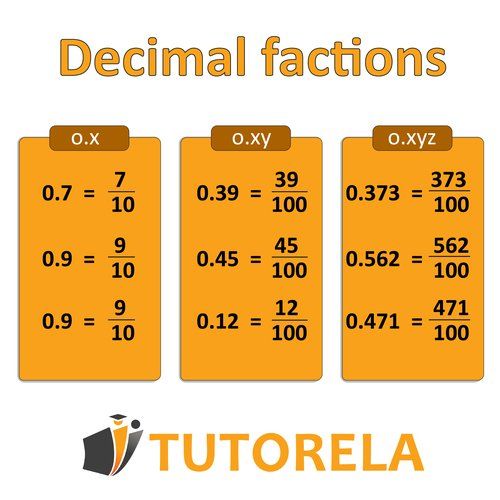Frequently Asked Questions
Everything you need to know about Converting Decimals to Fractions
How do you convert a decimal to a fraction step by step?
+ First, read the decimal aloud to identify the place value (tenths, hundredths, thousandths). Then place the decimal digits in the numerator and the corresponding place value (10, 100, 1000) in the denominator. Finally, simplify the fraction if possible by dividing both parts by their greatest common factor.
What denominator do I use when converting 0.75 to a fraction?
+ Use 100 as the denominator because 0.75 is read as '75 hundredths.' The last digit (5) is in the hundredths place, so you get 75/100, which simplifies to 3/4.
How do you convert decimals with whole numbers to mixed numbers?
+ Keep the whole number part separate and convert only the decimal portion to a fraction. For example, 4.25 becomes 4 and 25/100, written as 4 25/100 or simplified to 4 1/4.
Why does 0.200 equal 200/1000 instead of 2/10?
+ The conversion depends on the last significant digit's place value. Since 0.200 has its last digit in the thousandths place, you write it as 200/1000. However, both 200/1000 and 2/10 are equivalent when simplified.
What's the easiest way to remember decimal place values for fractions?
+ Count the decimal places: 1 decimal place = tenths (/10), 2 decimal places = hundredths (/100), 3 decimal places = thousandths (/1000). The number of zeros in the denominator matches the number of decimal places.
Do I always need to simplify fractions after converting from decimals?
+ While not always required, simplifying fractions is recommended for the clearest answer. For example, 75/100 should be reduced to 3/4, and 200/1000 should be simplified to 1/5 for easier understanding and use.
How do you convert repeating decimals to fractions?
+ Repeating decimals require algebraic methods beyond basic place value conversion. For terminating decimals covered in this topic, use the place value method: identify the rightmost digit's place value and use it as your denominator.
What common mistakes should I avoid when converting decimals to fractions?
+ Common errors include: using the wrong denominator (not matching decimal places), forgetting to simplify the final fraction, misreading the decimal place values, and incorrectly handling whole number parts in mixed decimals.
